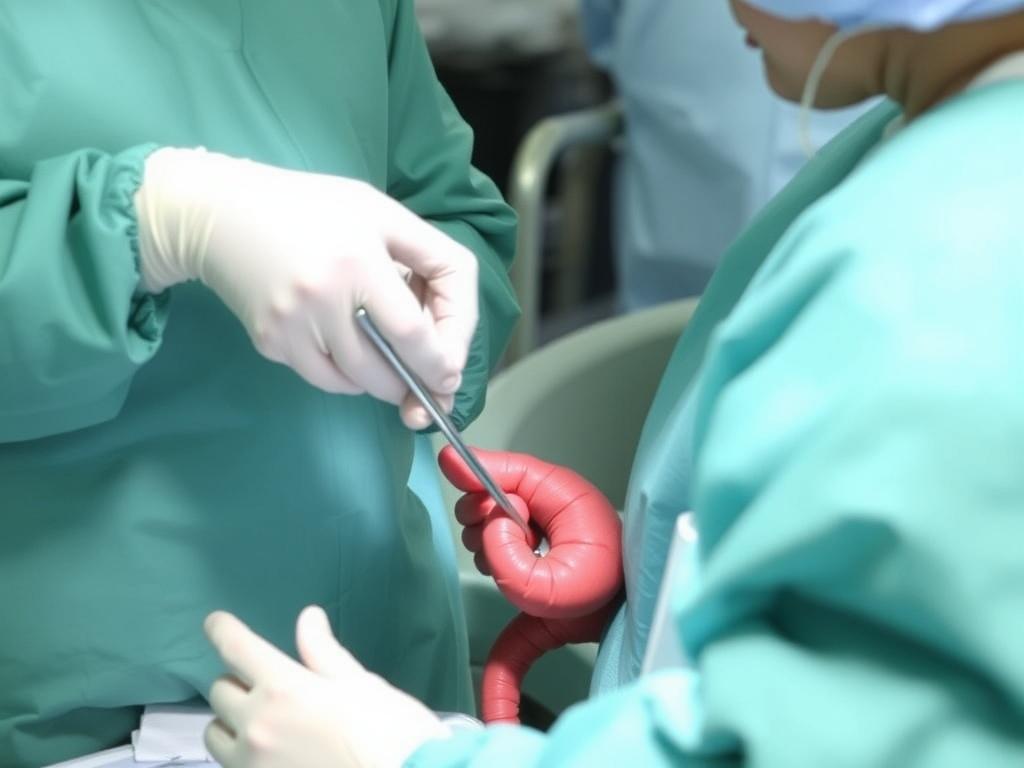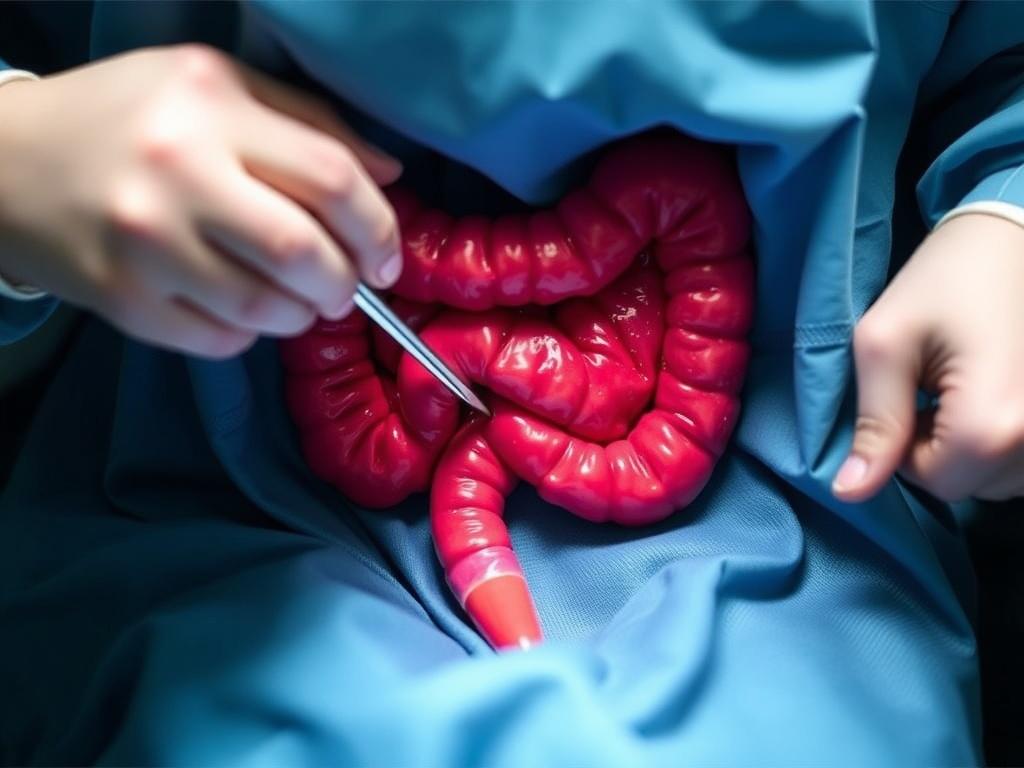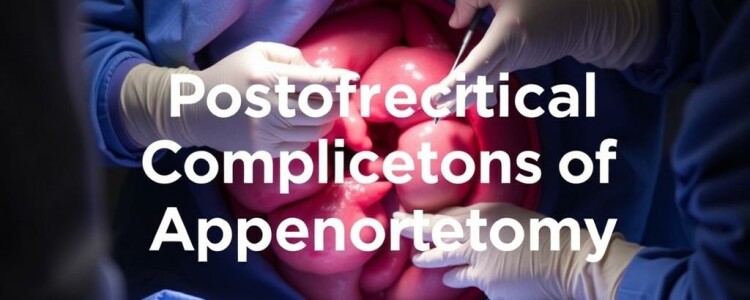Undergoing an appendectomy, whether it’s an emergency surgery or a planned procedure, is a significant event in anyone’s life. While the operation itself is generally safe and highly effective at preventing the dangers of a ruptured appendix, the journey doesn’t always end in the operating room. Postoperative complications of appendectomy, although relatively uncommon, can occur and impact recovery in various ways. Understanding these potential complications not only helps patients and their families prepare but also allows for early recognition and treatment, which can significantly improve outcomes.
Appendectomy, the surgical removal of the appendix, is one of the most common emergency surgeries performed worldwide. Typically, patients can expect smooth and speedy recoveries, but like any surgical procedure, it carries risks that should never be overlooked. From infections and abscess formation to bleeding and bowel obstructions, the postoperative phase unfolds a spectrum of possible challenges. Navigating through these can be much less stressful if you are well-informed, expect the unexpected, and work closely with your healthcare team.
What is an Appendectomy and Why Is It Performed?

Before diving into the postoperative complications, it’s essential to revisit what an appendectomy entails. The appendix is a small, tube-like organ attached to the large intestine. Although it doesn’t serve a vital function, it can become inflamed—a condition known as appendicitis. Appendicitis requires prompt surgical intervention because a swollen appendix can burst, spilling infectious material into the abdominal cavity and leading to life-threatening peritonitis.
An appendectomy involves surgically removing this inflamed appendix. This can be done either through an open surgery, typically a small incision in the lower right abdomen, or more commonly today, via laparoscopic surgery using small instruments and cameras inserted through tiny incisions. Both methods aim to remove the infected tissue and prevent further complications.
Even with advancements in surgical techniques and postoperative care, the risk of complications after appendectomy remains a critical topic. Recognizing these complications early can facilitate timely management and reduce the risk of long-term issues.
Common Postoperative Complications of Appendectomy
After appendectomy, most patients feel better within a week or two, but some experience challenges that require extra care or intervention. Let’s explore the most frequent complications that a patient may face:
1. Surgical Site Infections (SSI)
One of the most common postoperative complications is surgical site infection. This occurs when bacteria invade the wound area where the surgery was performed. Symptoms often include redness, swelling, warmth, pain at the incision site, and sometimes pus discharge or fever.
Open appendectomy carries a higher risk of SSI compared to laparoscopic procedures due to the larger incision, but both approaches are susceptible. Proper wound care and hygienic practices reduce this risk significantly.
2. Intra-abdominal Abscess
An intra-abdominal abscess is a collection of pus that develops within the abdominal cavity after surgery. This can occur if infection spreads or if some infected material is left behind. Signs include persistent abdominal pain, fever, and sometimes a palpable mass in the abdomen.
Abscesses generally require drainage, which can be done with a needle guided by ultrasound or CT scan, or sometimes through another surgical procedure.
3. Bleeding and Hematoma Formation
Postoperative bleeding is less common but can occur especially if blood vessels were accidentally injured during the appendectomy. Hematomas are collections of blood outside the blood vessels that may form near the surgical site and cause swelling and discomfort.
If bleeding is significant, it may necessitate urgent intervention, but minor bleeding is usually managed conservatively.
4. Bowel Obstruction
Scar tissue (adhesions) can form after abdominal surgery such as appendectomy, occasionally leading to bowel obstruction. This happens when the intestines are partially or completely blocked, resulting in symptoms like nausea, vomiting, abdominal distension, and severe cramps.
Signs of obstruction warrant immediate medical attention to prevent complications like bowel ischemia (loss of blood supply).
5. Ileus (Delayed Bowel Function)
Ileus is a temporary paralysis of the intestines that occurs after surgery, causing bloating, pain, and inability to pass stool or gas. It usually resolves within a few days but can prolong hospital stays and delay recovery.
Managing ileus involves supportive care such as hydration, electrolyte balance, and sometimes the use of medications to stimulate bowel movement.
6. Wound Dehiscence
In rare cases, the surgical wound may partially or fully open up after surgery—a complication known as wound dehiscence. This exposes internal tissues and increases the risk of infection requiring urgent medical care.
Factors like poor nutrition, diabetes, or improper wound care increase the risk for this complication.
Risk Factors Influencing Postoperative Complications

Understanding which factors increase the chances of postoperative complications can guide better preparation and prevention. Here’s a concise overview:
| Risk Factor | Effect on Postoperative Complications |
|---|---|
| Type of Surgery (Open vs. Laparoscopic) | Open surgery has higher infection and adhesion rates. |
| Severity of Appendicitis | Ruptured or gangrenous appendix increases infection risk. |
| Patient Age | Older patients are prone to slower healing and infections. |
| Underlying Medical Conditions | Diabetes, obesity, and immune suppression raise complication rates. |
| Smoking | Delays wound healing and increases infection risk. |
| Poor Nutritional Status | Weakens immune defense and delays repair. |
By addressing modifiable risk factors well before surgery, such as quitting smoking or optimizing medical conditions, patients can significantly improve their chances of a smooth recovery.
Signs and Symptoms to Watch for After Appendectomy
A key component in preventing serious complications is early detection. Patients and caregivers should be vigilant for specific symptoms after appendectomy that may indicate trouble. These warning signs include:
- Fever higher than 101°F (38.3°C), especially if persistent
- Increasing redness, swelling, or pus at the incision site
- Severe or worsening abdominal pain
- Persistent nausea or vomiting
- Swelling or pain that develops away from the incision site
- Abdominal distension or inability to pass gas or stool
- Dizziness, weakness, or rapid heartbeat which may suggest internal bleeding
If any of these symptoms arise, it’s critical to seek medical evaluation immediately. Early management can mean the difference between a quick recovery and prolonged complications.
Prevention and Management of Postoperative Complications
Thankfully, many postoperative complications of appendectomy are preventable and manageable with the right care strategies both before and after surgery. Here are several approaches:
Before Surgery
- Preoperative evaluation: Thorough assessment to identify and optimize risk factors such as diabetes or anemia.
- Patient education: Informing patients about what to expect from surgery and recovery can reduce anxiety and promote compliance.
- Antibiotic prophylaxis: Administration of antibiotics before incision reduces rates of infection.
During Surgery
- Surgical technique: Choosing minimally invasive laparoscopic surgery when feasible reduces trauma and infection risk.
- Aseptic procedures: Rigorous sterile techniques minimize bacterial contamination.
- Meticulous hemostasis: Careful control of bleeding during surgery to prevent hematomas.
After Surgery
- Wound care: Keeping the incision clean and dry; following instructions for dressing changes.
- Pain management: Adequate control facilitates early mobilization and prevents complications like ileus.
- Early ambulation: Walking soon after surgery stimulates bowel function and reduces risks of blood clots.
- Monitoring: Regular monitoring of vital signs and wound condition for early identification of problems.
In the event of complications, treatment will vary. For infections or abscesses, antibiotics or drainage procedures are typically necessary. Severe cases of bleeding or obstruction might require further surgical intervention. The goal is always to restore health with minimal disruption to the patient’s life.
Long-Term Consequences and Follow-up Care
Most patients recover fully within weeks of appendectomy without any lingering problems. However, in some cases, long-term consequences can arise from postoperative complications. Adhesions forming between abdominal tissues might cause intermittent pain or bowel obstruction months or even years later.
Regular follow-up with your healthcare provider ensures that any late complications are detected and managed early. Rehabilitation focusing on nutrition, physical activity, and healthy lifestyle habits supports sustained recovery.
Checklist for Post-Appendectomy Care at Home
| Care Aspect | Recommended Actions |
|---|---|
| Incision Site | Keep dry and clean; observe for signs of infection. |
| Pain Control | Use prescribed medications; avoid overuse of opioids. |
| Activity | Gradually increase movement; avoid heavy lifting for several weeks. |
| Diet | Start with light foods; hydrate well; avoid constipation. |
| Follow-Up Visits | Attend scheduled appointments; report any concerns promptly. |
Adhering to these guidelines maximizes healing and minimizes the risk of complications, empowering patients to regain their normal lives swiftly.
Frequently Asked Questions About Postoperative Complications of Appendectomy
Can laparoscopic surgery completely eliminate postoperative complications?
While laparoscopic appendectomy reduces the risks of infection and adhesions compared to open surgery, it does not entirely eliminate the chance of complications. Vigilant postoperative care remains essential.
How soon after appendectomy should complications be expected if they happen?
Most complications develop within the first few days to weeks post-surgery, though some issues like adhesions may appear months later.
Is it common to experience pain months after appendectomy?
Persistent pain is uncommon and should be evaluated by your doctor. It could be related to scar tissue or other abdominal conditions.
What are the signs that an intra-abdominal abscess has formed?
Symptoms include fever, chills, abdominal pain, and sometimes a palpable lump. Imaging studies like an ultrasound or CT scan are needed for diagnosis.
Are there any lifestyle changes recommended after an appendectomy?
Maintaining a balanced diet, avoiding smoking, and regular physical activity promote healing and reduce postoperative complications.
Emerging Trends and Research in Managing Postoperative Appendectomy Complications
With advances in medical technology, new strategies are continually being developed to reduce postoperative complications of appendectomy. For instance, enhanced recovery after surgery (ERAS) protocols focus on optimizing pain control, nutrition, and early ambulation, which have shown promising results in lowering complication rates.
Ongoing research into antibiotics use, minimally invasive techniques, and even non-surgical management of certain appendicitis cases aims to shift the paradigm of appendectomy care. While these developments are exciting, patient education and individualized care plans remain the cornerstone of successful recovery.
Conclusion
In summary, while appendectomy is a common and generally safe surgical procedure, postoperative complications can and do occur. From infections and abscesses to bowel obstructions and wound problems, knowing the possible complications and recognizing their signs early is crucial for effective treatment. Fortunately, with modern surgical techniques, careful preoperative planning, and diligent postoperative care, most patients recover swiftly and completely. By understanding the risk factors, adhering to recommended care protocols, and maintaining clear communication with healthcare providers, patients can navigate their appendectomy recovery confidently and minimize the chance of complications that may disrupt their journey back to health.



